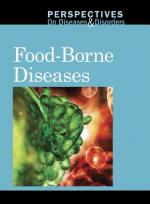|
This section contains 1,021 words (approx. 4 pages at 300 words per page) |

|
World Health Organization
About the author: The World Health Organization is the United Nations' specialized agency for health.
Food-borne illnesses have increased markedly in eastern and western Europe in the past decade. As many as one person in three in industrialized countries may be affected by food-borne diseases every year. Most illness is bacterial, caused by Salmonella and Campylobacter pathogens, or the result of contamination from chemical sources, such as lead or dioxin. Differences in national food safety and quality policies across Europe make it difficult to uniformly protect the health and well-being of consumers in the region. All countries should have science-based risk assessment and management systems in place to minimize the dangers posed by food-borne illnesses.
Food safety and quality need to be improved in all European countries because foodborne diseases have...
|
This section contains 1,021 words (approx. 4 pages at 300 words per page) |

|




